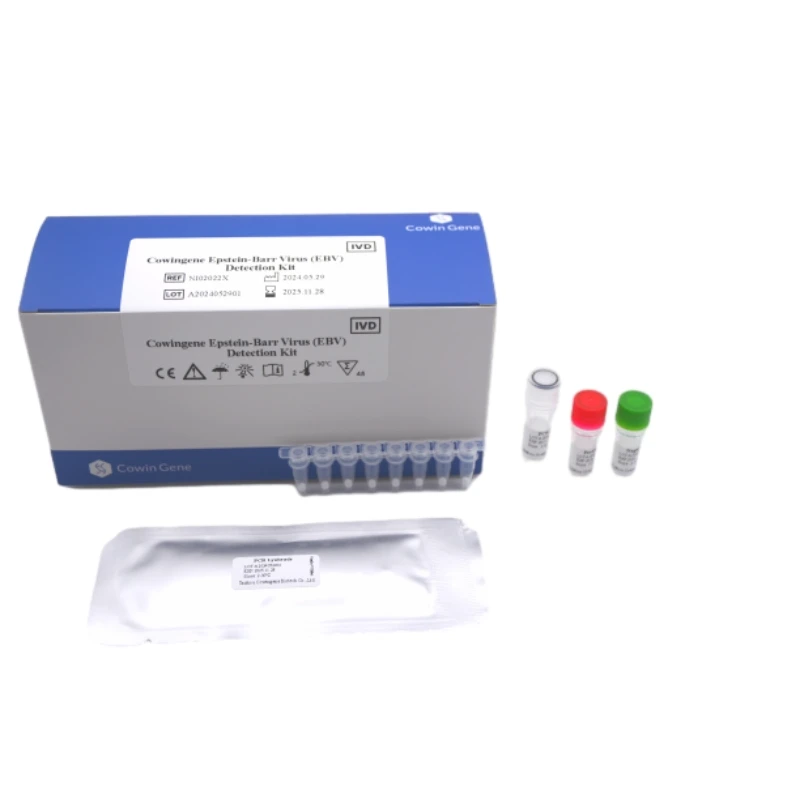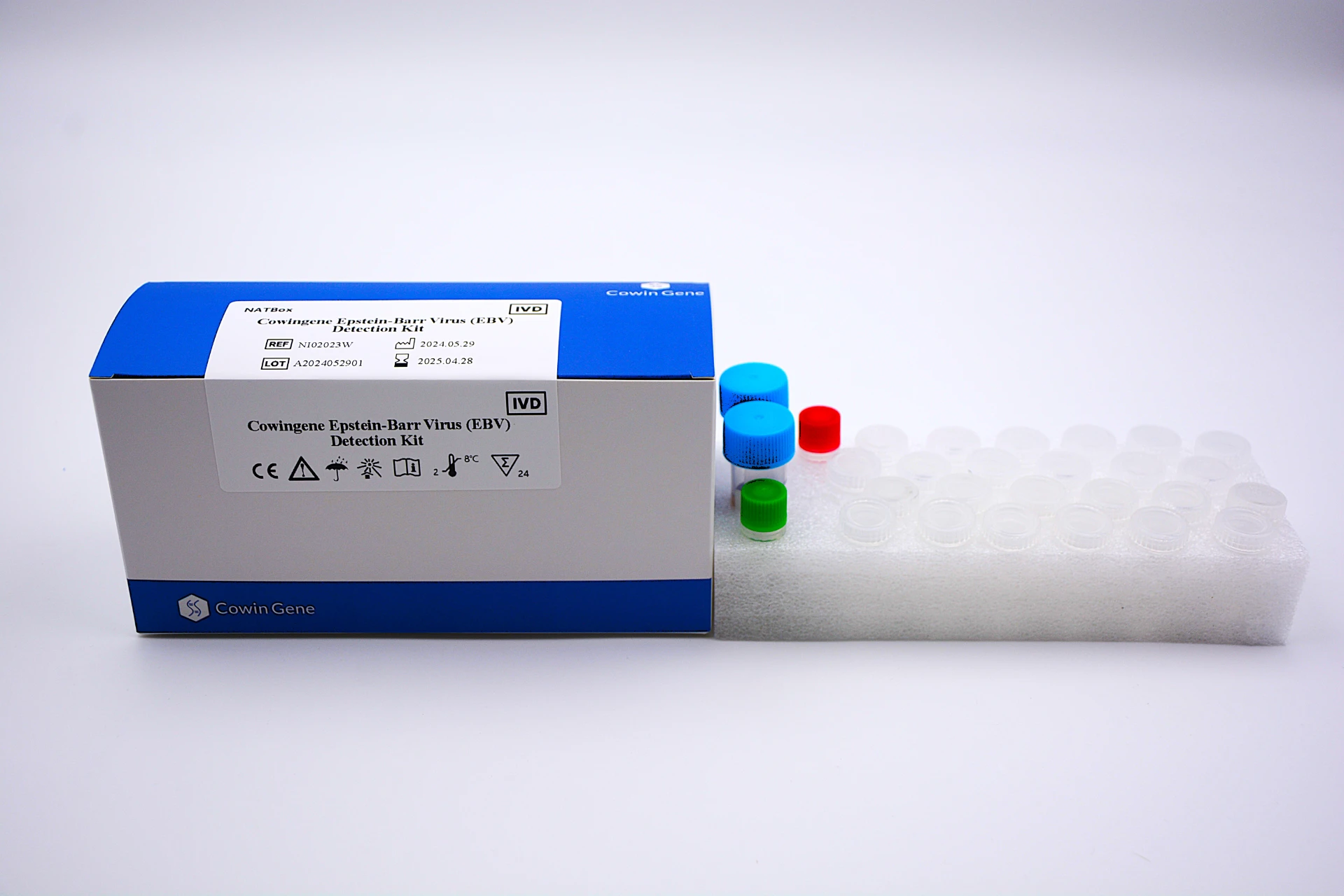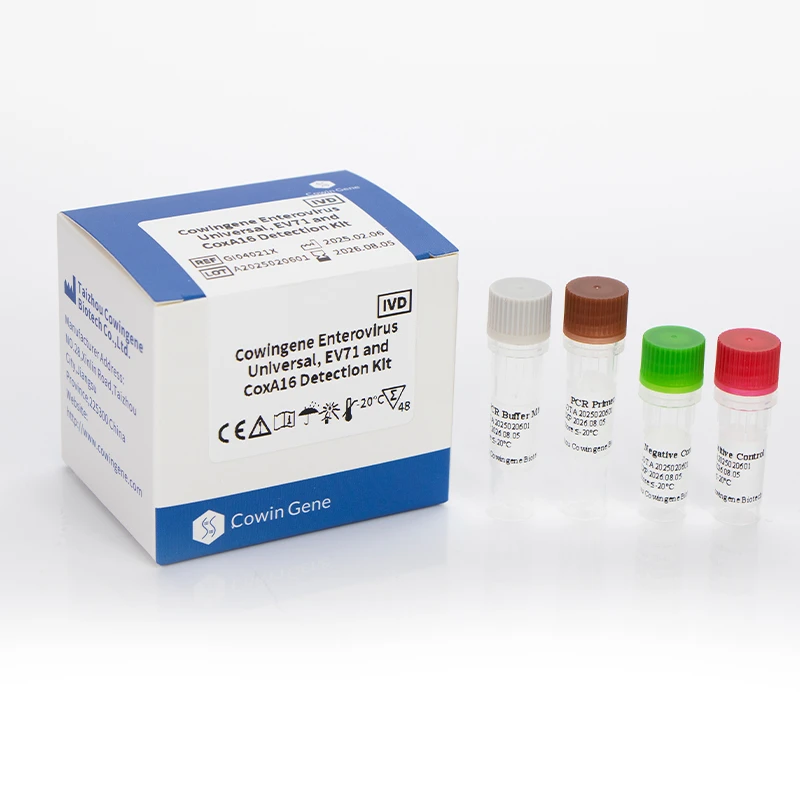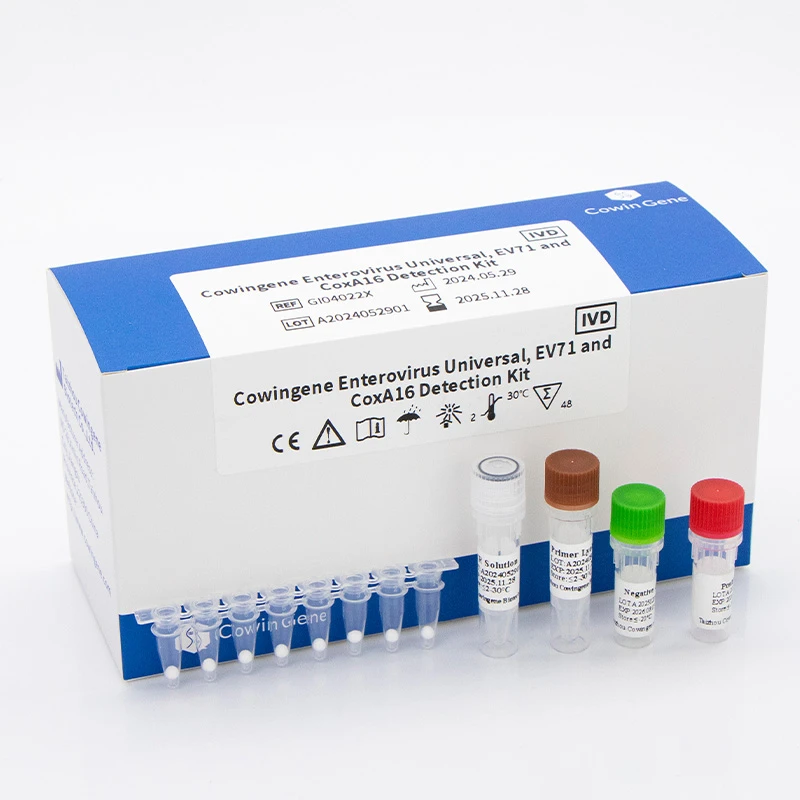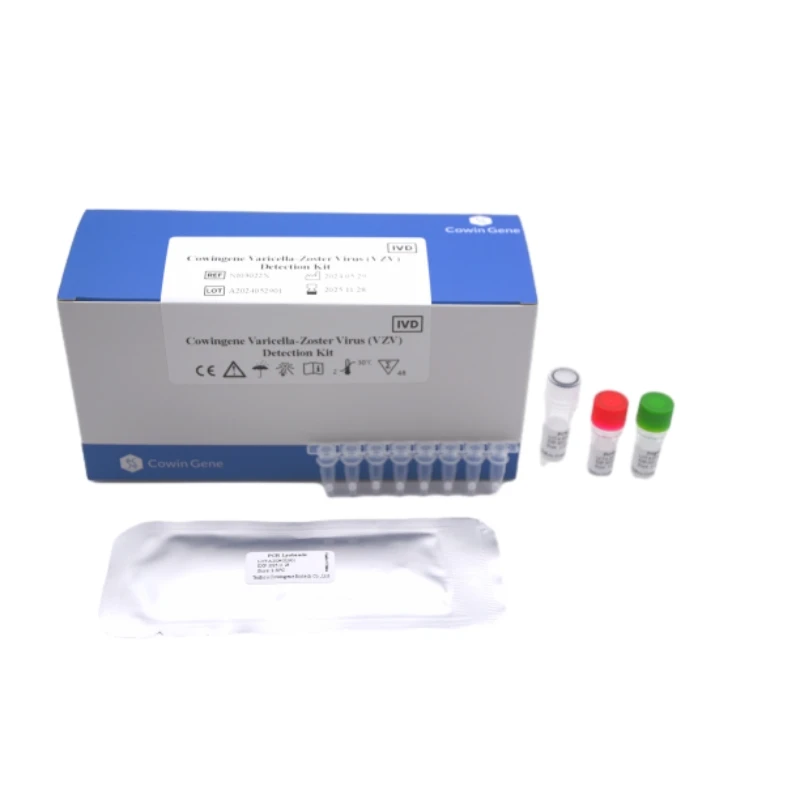Sep . 19, 2025 10:40 Back to list
Rapid Respiratory Panel Test for Pathogen ID & Treatment
The Imperative of Comprehensive Respiratory Panel Testing in Modern Diagnostics
In clinical diagnostics, the ability to rapidly and accurately identify respiratory pathogens is paramount for effective patient management and public health. A respiratory panel test for the simultaneous detection of multiple viral and bacterial targets has revolutionized how laboratories approach respiratory illness diagnosis. These multiplex PCR-based assays offer a significant advantage over traditional single-target tests, providing clinicians with a comprehensive pathogen profile in a fraction of the time. This article delves into the technical intricacies, applications, and strategic advantages of advanced respiratory panel solutions, catering to the exacting standards of B2B decision-makers and technical professionals.
Industry Trends Driving the Adoption of Respiratory Pathogen Panels
The landscape of infectious disease diagnostics is rapidly evolving, driven by several key trends. The recent global health crises have underscored the critical need for rapid and comprehensive diagnostic tools to combat emerging and re-emerging respiratory pathogens. This has accelerated the shift from syndromic testing to advanced multiplex PCR platforms, making the respiratory panel test for a cornerstone of modern laboratory infrastructure.
- Increased Demand for Rapid Turnaround Times: Clinicians require faster results to initiate appropriate treatment, manage bed capacity, and implement infection control measures effectively. Multiplex PCR panels deliver results in hours, significantly improving patient outcomes.
- Expansion of Pathogen Coverage: The recognition that multiple pathogens can present with similar respiratory symptoms has led to the demand for panels that can simultaneously detect a broad range of viruses (e.g., Influenza A/B, RSV, SARS-CoV-2, Adenovirus) and bacteria (e.g., Mycoplasma pneumoniae, Chlamydophila pneumoniae).
- Automation and Integration: Laboratories are seeking solutions that can be integrated into existing automated workflows, reducing hands-on time, minimizing human error, and increasing throughput, particularly for high-volume testing.
- Enhanced Surveillance Capabilities: Public health agencies leverage comprehensive respiratory pathogen panel data for epidemiological surveillance, outbreak detection, and tracking the spread of infectious diseases.
- Point-of-Care (POC) Development: While primarily lab-based, there's an increasing push towards developing simplified, rapid respiratory panel tests suitable for near-patient settings, though these often have more limited target coverage.
These trends collectively highlight the transition towards more efficient, accurate, and comprehensive diagnostic approaches, positioning advanced respiratory panel tests as indispensable tools for healthcare systems worldwide.
Detailed Process Flow: From Kit Manufacturing to Diagnostic Workflow
Understanding the comprehensive process behind a respiratory pathogen panel pcr test involves two distinct yet intertwined stages: the meticulous manufacturing of the diagnostic kit and the rigorous laboratory workflow that culminates in a diagnostic result.
1. Manufacturing Process of Respiratory Diagnostic Kits
The production of high-quality diagnostic kits, such as the Cowingene Influenza A/B Detection Kit (Lyophilized), adheres to stringent quality control and manufacturing standards.
- Raw Material Sourcing & Qualification: High-grade oligonucleotides (primers and probes), enzymes (e.g., reverse transcriptase, DNA polymerase), dNTPs, and other chemical reagents are sourced from validated suppliers. Each batch undergoes rigorous incoming quality control to ensure purity, concentration, and performance consistency.
- Oligonucleotide Synthesis: Custom DNA/RNA primers and fluorescent probes, designed to target specific pathogen sequences, are synthesized with high fidelity and purified to remove truncated sequences and other impurities.
- Reagent Formulation & Mixing: The core PCR master mix components are precisely formulated in a controlled environment. For lyophilized kits, like Cowingene's, this involves creating a stable, concentrated mix suitable for freeze-drying.
- Lyophilization (Freeze-Drying): This critical process removes water from the formulated reagents while preserving their biochemical activity. Lyophilization enhances product stability, extends shelf life, and simplifies storage and transport, particularly for molecular diagnostics. The process involves freezing the reagent mixture and then reducing the surrounding pressure to allow the frozen water to sublimate directly from the solid to the gas phase.
- Dispensing & Packaging: The lyophilized reagents are dispensed into individual reaction tubes or plates in an ISO-certified cleanroom environment, minimizing contamination risks. These are then sealed and packaged with desiccants to maintain stability.
- Testing Standards & Quality Control:
- Performance Validation: Each manufacturing lot undergoes extensive testing for sensitivity (Limit of Detection - LoD), specificity, reproducibility, and stability using characterized reference materials and clinical samples.
- Contamination Testing: PCR-based tests are highly susceptible to contamination; therefore, kits are rigorously tested for the absence of exogenous nucleic acids.
- Regulatory Compliance: Manufacturing facilities and processes adhere to international standards such as ISO 13485 (Medical devices – Quality management systems), CE-IVD marking for European markets, and potentially FDA clearance/EUA for the US market, ensuring products meet safety and performance benchmarks.
- Service Life: Lyophilized kits typically boast an extended shelf life of 12-24 months when stored under specified conditions (e.g., -20°C or refrigerated, depending on the product) due to the removal of water, which inhibits degradation pathways.
2. Laboratory Workflow of a Respiratory Panel Test
For end-users in clinical diagnostics, public health laboratories, and research institutions, the workflow of performing a respiratory panel test for involves several critical steps:
- Sample Collection: Appropriate clinical samples, typically nasopharyngeal swabs, oropharyngeal swabs, bronchoalveolar lavage (BAL), or sputum, are collected following established clinical guidelines. Proper collection is crucial for accurate results.
- Nucleic Acid Extraction: Viral RNA and bacterial DNA are extracted from the clinical samples using automated or manual extraction systems. This step purifies and concentrates the genetic material, removing inhibitors that could affect PCR.
- Master Mix Preparation & Sample Addition: The lyophilized kit components are rehydrated with appropriate buffers. Extracted nucleic acids are then added to the prepared master mix, which contains primers, probes, enzymes, and other necessary reagents for multiplex PCR amplification.
- Real-time PCR Amplification: The prepared reactions are loaded into a real-time PCR instrument. During thermal cycling, reverse transcription converts RNA to cDNA (for RNA viruses), followed by DNA amplification. Fluorescent probes in the master mix bind to specific amplified pathogen sequences, generating a fluorescent signal detected by the instrument. The cycle threshold (Ct) value indicates the initial amount of target nucleic acid.
- Data Analysis & Interpretation: Software analyzes the fluorescence data, generating Ct values for each target. A positive result indicates the presence of the pathogen's nucleic acid. Internal controls are crucial for confirming the validity of each test run, ensuring proper extraction and amplification occurred.
- Reporting: Results are reported to clinicians, specifying detected pathogens and their semi-quantitative presence.

Image 1: Schematic representation of a diagnostic workflow for respiratory pathogen detection.
Target Industries and Advantages: These tests are indispensable for clinical diagnostic laboratories, public health surveillance centers, and academic research facilities. Advantages include rapid diagnosis, targeted treatment initiation, reduced unnecessary antibiotic use (when viral pathogens are identified), improved infection control, and enhanced epidemiological monitoring.
Technical Specifications of Respiratory Pathogen Panels
The technical prowess of a respiratory pathogen panel is defined by its ability to accurately and reliably detect a broad spectrum of pathogens. Key parameters include sensitivity, specificity, breadth of pathogen coverage, and turnaround time.
Cowingene Influenza A/B Detection Kit (Lyophilized) – Example Specifications
As an example of a focused respiratory detection solution, the Cowingene Influenza A/B Detection Kit provides critical data for initial diagnosis:
| Parameter | Specification |
|---|---|
| Product Name | Cowingene Influenza A/B Detection Kit (Lyophilized) |
| Target Pathogens | Influenza A virus, Influenza B virus, Internal Control |
| Detection Method | Real-time Reverse Transcription Polymerase Chain Reaction (RT-PCR) |
| Sample Type | Nasopharyngeal swabs, Oropharyngeal swabs, Sputum, BAL fluid |
| Limit of Detection (LoD) | Influenza A: ≤ 100 copies/mL; Influenza B: ≤ 100 copies/mL (Varies by specific strain and study) |
| Specificity | 100% (No cross-reactivity with common respiratory pathogens or commensal flora tested) |
| Reaction Volume | 25 µL (typical) |
| Turnaround Time | Approx. 60-90 minutes post-extraction |
| Shelf Life | 12 months from manufacturing date (lyophilized) at -20°C |
| Compatible Instruments | Open-system real-time PCR platforms (e.g., Applied Biosystems, Bio-Rad, Roche LightCycler) |
Comprehensive respiratory panel test for kits extend this concept to detect dozens of targets, often utilizing advanced chemistry for high multiplexing capabilities. These broader panels will feature similar metrics but applied across a larger array of viral and bacterial targets.
Application Scenarios for Respiratory Pathogen Panel PCR
The versatility and comprehensive nature of respiratory pathogen panel pcr make them invaluable across a multitude of clinical and public health settings. Their ability to identify the causative agent quickly has a direct impact on patient management and infection control strategies.
- Acute Respiratory Infection (ARI) Diagnosis: Rapidly differentiate between viral and bacterial infections, informing appropriate treatment decisions (e.g., avoiding unnecessary antibiotics for viral infections) and reducing the spread of resistant pathogens.
- Hospital-Acquired Infection (HAI) Control: Identify the source and spread of respiratory outbreaks within healthcare facilities, enabling swift isolation and cohorting strategies to protect vulnerable patients.
- Immunocompromised Patients: Provide crucial diagnostic information for transplant recipients, cancer patients, and others with weakened immune systems, where even common respiratory viruses can lead to severe, life-threatening complications.
- Pediatric Diagnostics: Rapidly diagnose respiratory infections in children, reducing hospital stays and improving outcomes, especially in cases of bronchiolitis or pneumonia.
- Public Health Surveillance: Monitor the prevalence and circulation of respiratory pathogens in a community, detect emerging strains, and track seasonal epidemics. This data is vital for vaccine development and public health interventions.
- Research & Development: Utilize panels for epidemiological studies, vaccine efficacy trials, and understanding co-infection dynamics of respiratory pathogens.
The broad utility of these panels underscores their role as an essential diagnostic tool in modern medicine, driving better patient care and more effective public health responses.
Technical Advantages of Advanced Respiratory Panel Tests
Investing in an advanced respiratory panel test for offers distinct technical and operational advantages over traditional diagnostic methods. These benefits translate directly into improved clinical utility and economic efficiency for laboratories and healthcare systems.
- Multiplexing Capability: Simultaneously detect multiple respiratory viral and bacterial pathogens from a single patient sample. This eliminates the need for sequential testing, reducing sample volume requirements and improving diagnostic yield.
- High Sensitivity and Specificity: PCR-based assays offer superior analytical sensitivity, detecting low viral/bacterial loads, and high specificity, minimizing false positives due to conserved genetic regions. This accuracy leads to more confident diagnoses.
- Rapid Turnaround Time: Deliver results within hours, facilitating immediate clinical decisions, such as isolation, antiviral/antibiotic initiation, and bed management. This is a crucial advantage over culture-based methods that can take days.
- Enhanced Workflow Efficiency: Automated extraction and PCR platforms streamline laboratory operations, reducing hands-on time and freeing up skilled personnel for other tasks. This increases overall laboratory throughput.
- Detection of Co-infections: Accurately identify instances where a patient is infected with multiple pathogens, which can influence disease severity and treatment strategies.
- Reduced Resource Utilization: By consolidating multiple tests into one, laboratories can save on reagents, consumables, and labor, leading to significant cost efficiencies in the long term.
- Improved Public Health Outcomes: Contribute to robust surveillance efforts by providing comprehensive data on circulating pathogens, aiding in outbreak detection and epidemiological trend analysis.
These technical advantages position respiratory panel tests as indispensable tools for modern diagnostic laboratories committed to precision, efficiency, and superior patient care.
Vendor Comparison: Evaluating Respiratory Pathogen Panel Solutions
Choosing the right respiratory pathogen panel pcr system is a strategic decision for any diagnostic laboratory. While Cowingene specializes in targeted detection like Influenza A/B, the broader market offers various multiplex panels. A comparative analysis helps identify solutions that align with specific laboratory needs, throughput requirements, and budget constraints.
| Feature/Vendor Type | Vendor A (Broad Panel - e.g., BioFire FilmArray) | Vendor B (Modular Panel - e.g., Seegene) | Vendor C (Targeted Panel - e.g., Cowingene Influenza A/B Kit) |
|---|---|---|---|
| Pathogen Coverage | >20 targets (viruses & bacteria) | 5-15 targets (configurable modules) | 2-3 targets (Influenza A/B) |
| System Type | Fully Integrated (sample-to-answer) | Semi-automated (extraction & PCR) | Open System (manual extraction, open PCR) |
| Turnaround Time (Total) | ~1 hour | ~3-4 hours | ~2-3 hours |
| Hands-on Time | Minimal (few minutes) | Moderate (20-30 minutes) | Moderate (20-30 minutes) |
| Capital Investment | High | Medium | Low (utilizes existing PCR) |
| Throughput (per instrument) | Low-Medium (1-8 tests/run) | High (96 tests/run) | High (96 tests/run) |
| Cost per Test | Highest | Medium | Lowest |
Laboratories must weigh the benefits of broad pathogen coverage and ease of use against the capital and operational costs. For scenarios requiring rapid, comprehensive syndromic testing, integrated solutions are ideal. For high-volume testing of specific targets or when budget constraints are a factor, modular or targeted open-system kits like those from Cowingene offer a highly efficient and cost-effective alternative.
Customized Solutions and Partnering for Precision Diagnostics
The evolving nature of respiratory pathogens necessitates diagnostic solutions that are not only robust but also adaptable. Leading providers understand that a one-size-fits-all approach is insufficient. Customization in a respiratory panel test for can range from adapting existing panels to developing bespoke assays.
- Flexible Panel Design: For specific epidemiological needs or outbreak scenarios, custom panels can be designed to include or exclude certain targets, optimizing for regional prevalence or specific clinical pathways.
- Integration with Existing Infrastructure: Customized solutions often focus on ensuring seamless integration with a laboratory's existing molecular diagnostic instruments and LIS (Laboratory Information System), minimizing disruption and training overhead.
- Lyophilized Formats for Specific Needs: For remote labs or those requiring maximum shelf stability and ease of transport, specialized lyophilized formats can be developed to preserve reagent integrity and simplify cold chain logistics. Cowingene's expertise in lyophilization highlights this benefit for enhanced stability and simplified storage.
- OEM and Private Labeling: Manufacturers often offer OEM services, allowing partners to white-label established and validated diagnostic kits under their own brand, benefiting from proven technology without the R&D investment.
- Technical Collaboration: Customization extends to technical collaboration on assay optimization, validation studies, and ongoing support to ensure the solution performs optimally in the client's unique environment.

Image 2: An advanced molecular diagnostic laboratory utilizing respiratory panel tests.
Partnering with a provider capable of delivering tailored solutions ensures that diagnostic capabilities are precisely aligned with evolving clinical demands and operational realities, maximizing both diagnostic accuracy and operational efficiency.
Application Case Study: Impact of Rapid Respiratory Panel Diagnosis
The real-world impact of a rapid respiratory panel test for cannot be overstated. Consider the following hypothetical, yet realistic, scenario:
Case: Pediatric Respiratory Outbreak in a Children's Hospital
- Challenge: A children's hospital experienced an influx of pediatric patients presenting with severe acute respiratory symptoms during peak flu season. Initial rapid antigen tests for Influenza A/B were negative, but symptoms persisted and escalated, raising concerns about other viral or bacterial co-infections, or a different primary pathogen.
- Intervention: The hospital's molecular diagnostics lab deployed a comprehensive respiratory pathogen panel PCR test. Nasopharyngeal swab samples from 15 affected children were processed.
- Results: Within 3 hours of sample reception, the panel identified Human Metapneumovirus (hMPV) in 8 patients, Respiratory Syncytial Virus (RSV) in 5, and a co-infection of hMPV and Mycoplasma pneumoniae in 2 patients. Critically, no Influenza A/B or SARS-CoV-2 was detected.
- Impact & Outcomes:
- Clinical Management: Clinicians rapidly shifted from influenza-focused treatment protocols. The two patients with bacterial co-infection received targeted antibiotic therapy, preventing unnecessary broad-spectrum antibiotic use for purely viral cases.
- Infection Control: The rapid identification of hMPV and RSV allowed for immediate implementation of specific isolation protocols for each virus, preventing further nosocomial spread. Cohorting of patients based on confirmed pathogen was quickly established.
- Resource Optimization: The precise diagnosis avoided prolonged empirical treatment, reduced the need for additional, costly single-pathogen tests, and optimized bed allocation based on infectivity risk.
- Epidemiological Insights: The data provided immediate insight into the causative agents of the mini-outbreak, allowing public health officials to monitor hMPV and RSV prevalence in the community more accurately.
This case exemplifies how a comprehensive respiratory panel test significantly enhances diagnostic precision, streamlines clinical decision-making, and strengthens public health responses, ultimately leading to better patient outcomes and more efficient healthcare resource utilization.
Ensuring Trust and Support: FAQ, Lead Times, Warranty, and Customer Service
For B2B clients, the reliability of a diagnostic solution extends beyond technical specifications to encompass robust support infrastructure. Cowingene is committed to providing comprehensive support to ensure optimal product performance and customer satisfaction.
Frequently Asked Questions (FAQ)
Q: What is the primary advantage of a lyophilized respiratory panel test?
A: Lyophilization significantly extends the shelf life of reagents, simplifies storage (often ambient or refrigerated instead of frozen), reduces shipping costs, and minimizes degradation, ensuring consistent performance over time. It makes a respiratory panel test for more accessible and stable.
Q: Are Cowingene kits compatible with automated extraction systems?
A: Yes, our kits are designed to be compatible with various common automated nucleic acid extraction platforms, providing flexibility for diverse laboratory setups. Specific protocols can be provided upon request.
Q: What quality certifications do your products hold?
A: Cowingene operates under ISO 13485 certified quality management systems. Our diagnostic kits, including those for respiratory pathogen panel detection, are CE-IVD marked, affirming compliance with European In Vitro Diagnostic Device Regulations.
Lead Time and Fulfillment
Cowingene maintains robust manufacturing capabilities and strategic inventory levels to ensure timely delivery. Standard lead times for our influenza detection kits are typically 1-2 weeks, with expedited options available for urgent requirements. For larger orders or customized solutions, lead times are communicated clearly at the time of quotation. Our efficient logistics network ensures reliable global delivery.
Warranty Commitments
All Cowingene diagnostic kits are backed by a comprehensive warranty, guaranteeing product performance against published specifications until the stated expiration date, provided they are stored and used according to our instructions for use (IFU). We are committed to replacing any defective products identified within the warranty period.
Dedicated Customer Support
Our dedicated team of technical support specialists and application scientists is available to assist with product inquiries, assay setup, troubleshooting, and data interpretation. We offer multi-channel support including phone, email, and online resources. On-site training and technical consultation can also be arranged to ensure seamless integration and optimal utilization of our diagnostic solutions within your laboratory environment. Your success in implementing a respiratory pathogen panel pcr is our priority.
References
- Centers for Disease Control and Prevention (CDC). "Respiratory Virus Season" - CDC.gov.
- World Health Organization (WHO). "WHO guidelines for influenza and other respiratory virus surveillance" - WHO.int.
- Clinical and Laboratory Standards Institute (CLSI). "MM03: Molecular Diagnostic Methods for Infectious Diseases" - CLSI.org.
- European Centre for Disease Prevention and Control (ECDC). "Guidance for rapid risk assessment of acute respiratory infections" - ECDC.europa.eu.
- Journal of Clinical Microbiology. "Comparison of Multiplex PCR Assays for the Detection of Respiratory Pathogens" - ASM.org.
Related PRODUCTS
-
Understanding Monkeypox Testing PCR – Global Health & Diagnostic Insights
NewsNov.24,2025 -
Comprehensive Guide to Monkey Pox Detection: Methods, Applications & Innovations
NewsNov.23,2025 -
Essential Guide to Monkeypox Detection: Technologies, Applications & Future Trends
NewsNov.23,2025 -
Understanding Strep B Test Cost: Global Insights and Healthcare Impact
NewsNov.22,2025 -
Group B Strep DNA Test – Fast, Accurate Screening to Prevent Neonatal Infection
NewsNov.21,2025 -
Essential Guide to Group B Strep Test Kits: Benefits, Uses & Innovations
NewsNov.20,2025


